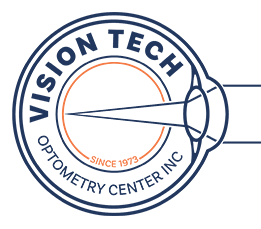
In today's digital age, it's almost impossible to go through a day without looking at a screen. Whether it's our work computers, smartphones, tablets, or televisions, the digital world has embedded itself into our everyday lives. But have you ever wondered what this prolonged exposure to screens is doing to your eyes? If you've experienced discomfort after a long day of staring at a screen, you might be dealing with Computer Vision Syndrome (CVS).
Causes of Computer Vision Syndrome
The causes of CVS are multifaceted and often interrelated. The major cause correlates with the prolonged use of digital screens. When we look at a screen for extended periods, our eyes need to focus and refocus all the time. They move back and forth as we read, and we may also need to glance down at papers and then back up to type. All these tasks require a lot of effort from the eye muscles.
Additionally, the presence of glare or reflection on the screen, poor seating posture, and being too close or too far from the screen can all contribute to the development of CVS.
Symptoms of Computer Vision Syndrome
The symptoms associated with CVS are varied and can manifest in many forms. They include headaches, blurred vision, dry eyes, neck and shoulder pain, eye strain, redness in the eyes, fatigue, eye twitching, and a reduced attention span.
The severity of these symptoms will vary depending on the individual's visual abilities and the amount of time spent looking at the digital screen. If you're experiencing any of these symptoms regularly, it's essential to seek professional help to alleviate the discomfort and prevent long-term damage.
How to Prevent Computer Vision Syndrome
Prevention is often the best cure, and with some adjustments to your screen time, you can significantly reduce your risk of developing CVS.
One of the first steps to take is to ensure your workspace is set up to minimize strain on your eyes. This includes adjusting the lighting to minimize glare on your screen, positioning your screen to avoid tilt and reflection, and ensuring your screen is approximately an arm's length away and slightly below eye level.
It's also important to take regular breaks. One popular technique is the 20-20-20 rule: every 20 minutes, look away from your screen and focus on something 20 feet away for 20 seconds. This gives your eyes a much-needed rest and reduces the strain caused by constantly focusing on your screen.
Finally, don't forget to blink frequently to prevent dry eyes, and consider using lubricating eye drops if your eyes feel dry or irritated. If you wear glasses or contact lenses, make sure your prescription is up-to-date and suitable for viewing a computer screen.
Professional Help for Computer Vision Syndrome
If you've followed the preventive measures but are still struggling with the symptoms of CVS, it may be time to seek professional help. An optometrist can conduct a comprehensive eye examination to rule out vision problems that might be contributing to your symptoms. They can also provide personalized advice on how to adjust your workspace or screen-use habits to minimize strain on your eyes.
In some cases, specialized computer glasses may be recommended. These glasses are designed to provide optimal visual comfort when looking at digital screens. They can be customized to correct any refractive errors and reduce glare, reflection, and harmful blue light.
Protecting Your Eyes in the Digital Age
As our world becomes increasingly digital, the issue of computer vision syndrome is more pertinent than ever. Understanding computer vision syndrome and how we can prevent it is crucial for everyone.
For more information on computer vision syndrome, visit Vision Tech Optometry Center at our office in Waynesboro, Virginia. Please call (540) 215-8361 to schedule an appointment today.






